At IFA 2022, FlatpanelsHD had a chance to see and try LG Flex, which can go from flat to curved, as well as the world's first 97-inch OLED TV and 240Hz OLED monitor.
Most leading TV makers exhibited OLED TVs at this year's IFA show in Berlin – even Samsung – but LG once again stole the limelight with three products that in different ways demonstrate the potential of OLED and the future of displays.
First 240Hz OLED monitor
OLED TVs from LG, Panasonic, Philips, Sony, Vizio and other brands typically use a 100/120Hz panel. 100Hz as Europeans like to say due to their 50Hz PAL legacy, or 120Hz as Americans like to say due to their 60Hz NTSC legacy. The TV panels can operate at different refresh rates.
LG and Samsung most recently introduced minor OLED improvements with 138Hz and 175Hz refresh rates that can be useful in the PC ecosystem. The TV ecosystem, however, standardizes around doubling; 1080p to 2160p (4K) to 4320p (8K) as well as 50/60Hz to 100/120Hz to 200/240Hz.
LG's first 240Hz OLED monitor is the 45-inch 45GR95QE with 3440x1440 resolution (21:9) – a real product that you can buy soon. It is designed for PC gaming but seen in a larger perspective 240Hz is an exciting improvement as it can be considered the next full step for OLED refresh rate. Corsair is planning to launch a 240Hz OLED monitor based on the same LG Display panel and earlier this year Samsung Display unveiled the world's first 240Hz OLED panel for portable devices.
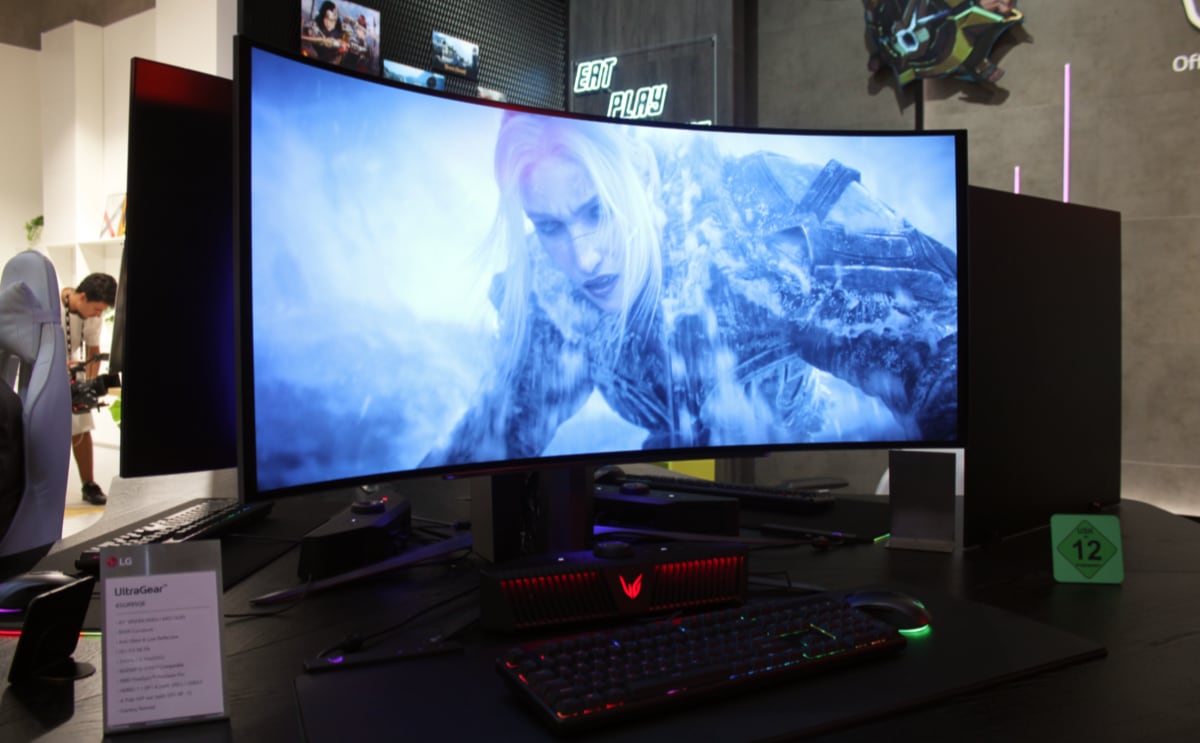
First 240Hz OLED monitor, the LG 45GR95QE. Photo: FlatpanelsHD
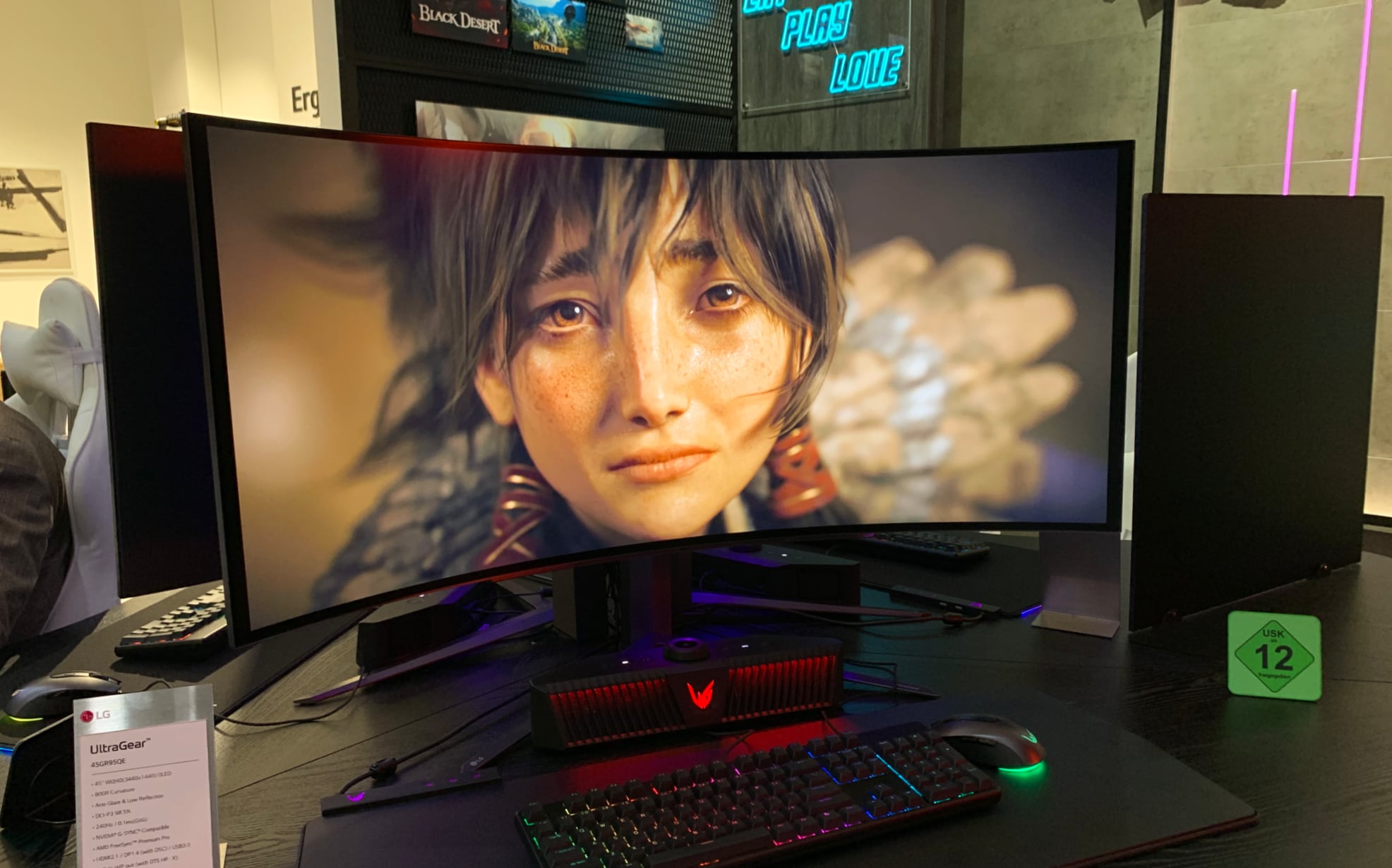
First 240Hz OLED monitor, the LG 45GR95QE. Photo: FlatpanelsHD
We spent some time with the LG UltraGear 45GR95QE at IFA. While the 240Hz monitor felt snappy and pictures in motion looked very clear, we need more time with the monitor to reach conclusions. Worth noting here is that because OLED pixels have extremely fast response time (45GR95QE has a 0.1 ms g2g specification) 240Hz should theoretically bring further improvements in speed and latency, and reduce motion blur. Of course, you need very powerful hardware to run games at 240fps but the industry has to start somewhere and the monitor provides flexibility due to its VRR support, allowing users to also enjoy frame rates between 120Hz and 240Hz, too.
For more information on response time, refresh rate, sample-and-hold, and why the industry should strive for 1000Hz, we recommend this article from Blur Busters.
One thing that we did not particularly like about LG's 45GR95QE is its anti-glare coating as it tends to make the OLED panel look a little dull. We are also hoping for a flat version and higher resolution. LG declined to comment on the price tag.
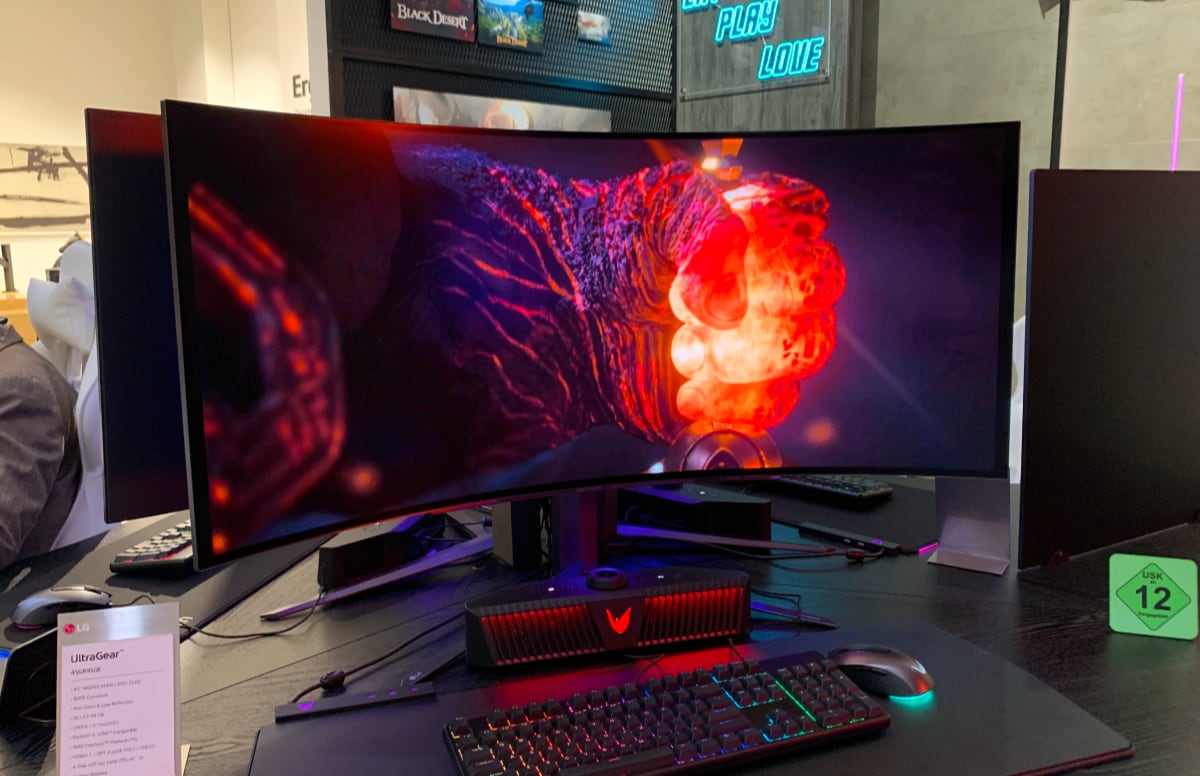
irst 240Hz OLED monitor, the LG 45GR95QE. Photo: FlatpanelsHD
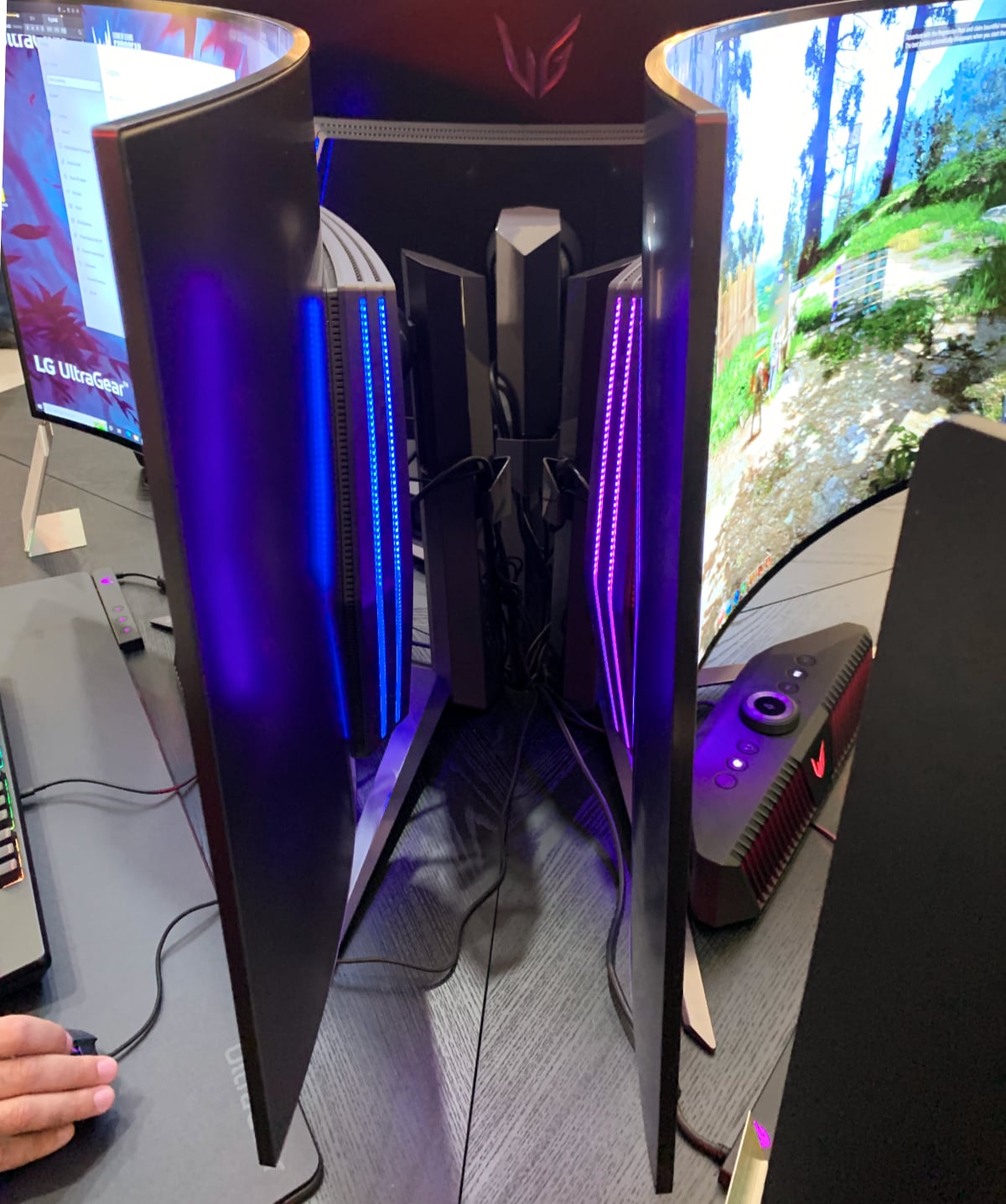
First 240Hz OLED monitor, the LG 45GR95QE. Photo: FlatpanelsHD
First 97-inch OLED TV
The largest OLED TV to date has been LG's 88-inch 8K OLED TV which costs $25000. The new 97-inch OLED TV (model OLED97G2) that LG launched at IFA 2022 is larger and will cost roughly the same, depending on your region, but feature 4K resolution instead.
In our article about big, biggest, bigger at IFA I wrote that the 97-inch OLED TV "looks amazing" that I "would go as far as to call it the TV with the best picture quality at IFA 2022, because size matters – and microLED TVs don't as long as they're prototypes".
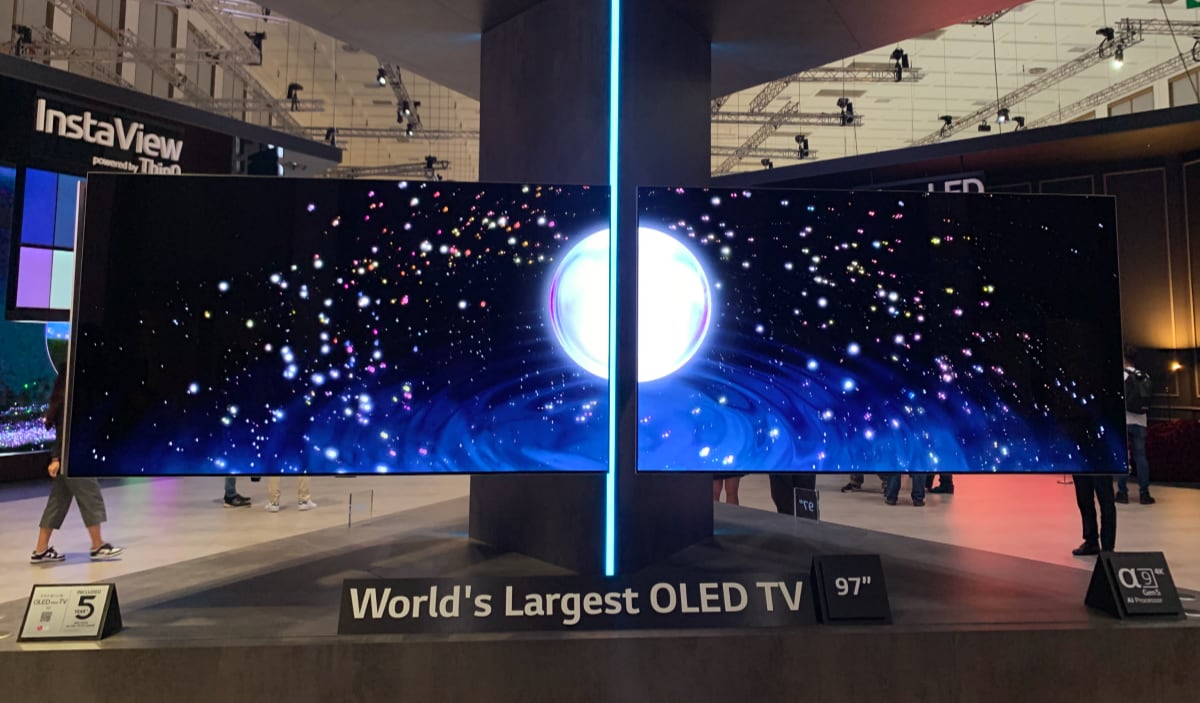
LG launched the world's first 97-inch OLED TV at IFA. Photo: FlatpanelsHD
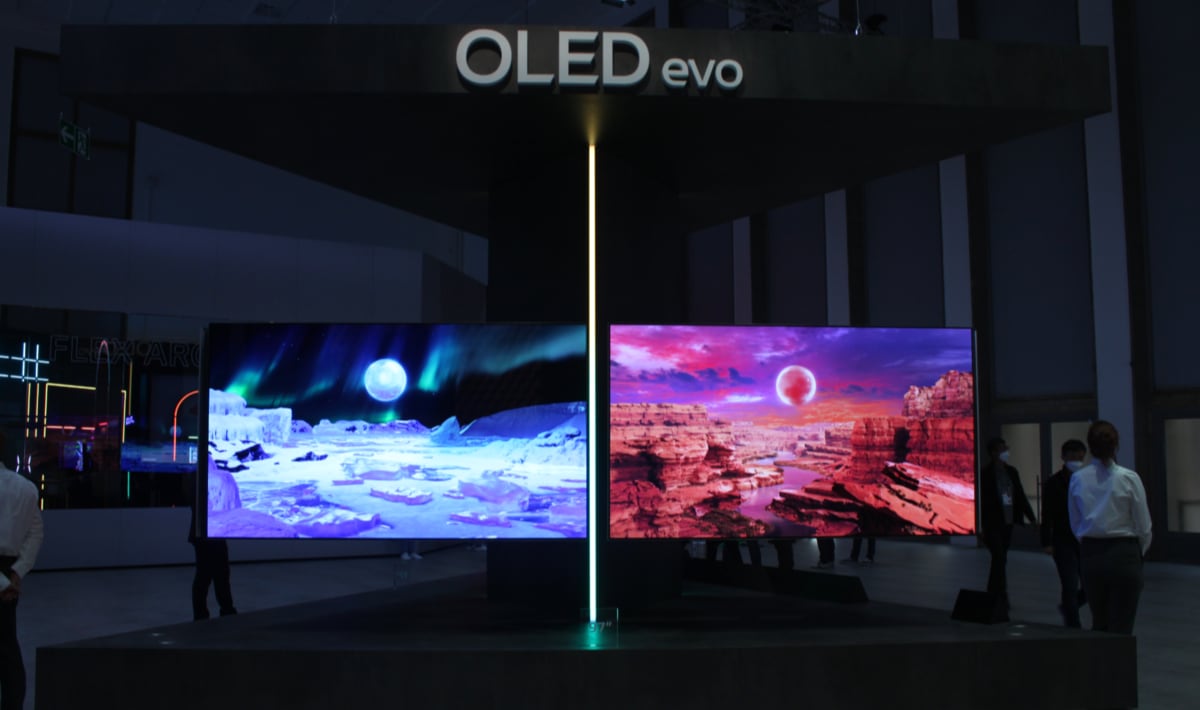
LG launched the world's first 97-inch OLED TV at IFA. Photo: FlatpanelsHD
OLED TVs are inching closer to projector sizes and deliver significantly better picture quality, especially with movies, series and games in HDR (High Dynamic Range). Besides the starting price that is many times higher than TCL's 98-inch LCD TV (which of course cannot match the OLED TV), our main concern is whether panel homogeneity is good enough for such a large screen to avoid horizontal and vertical bands as well as variations in color tone across the panel. We did not spot such issues at IFA but we assume that the panels were hand-picked for the show.
It is a step forward for OLED but we do not expect it to become affordable until LG Display, the panel maker, completes its first 10.5 generation OLED factory. That may take years still.
LG Display by the way teased "next generation" OLED for 2023. Our guess is that it relates to micro lenses that can boost brightness.
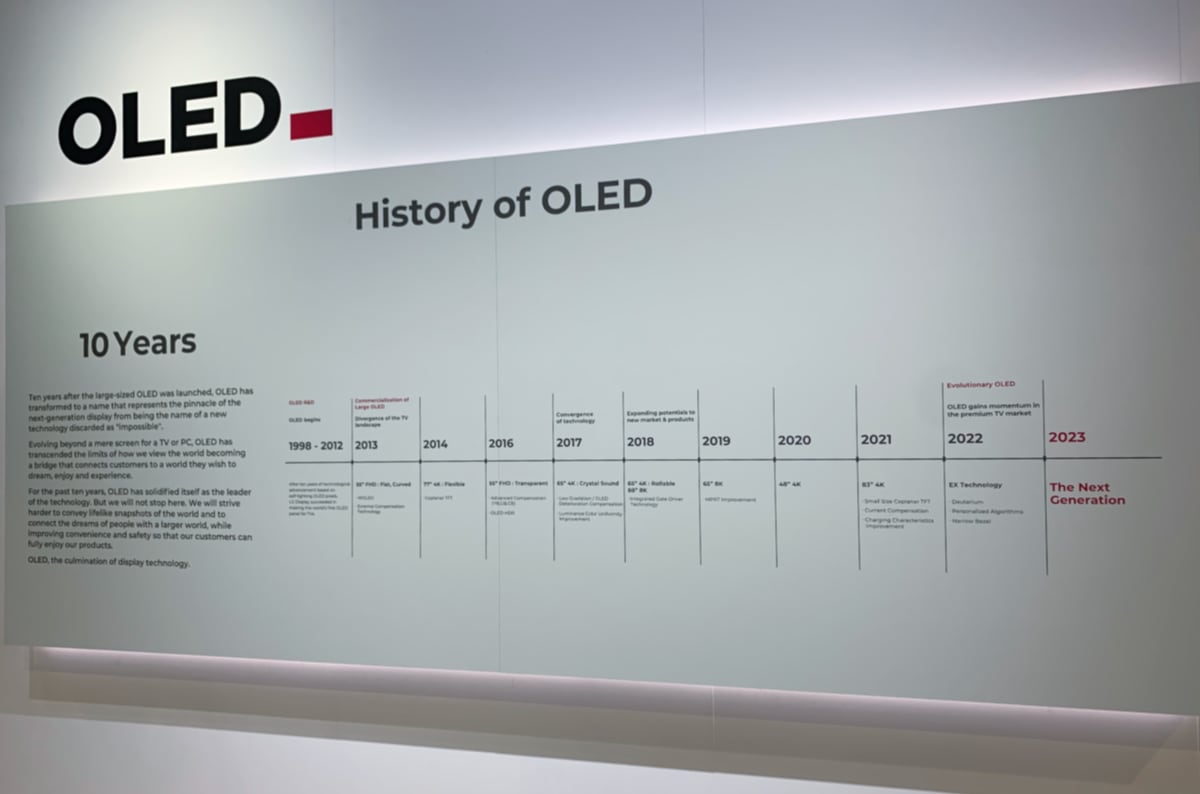
At IFA, LG Display teased "next generation" OLED. Photo: FlatpanelsHD
LG Flex OLED TV
Ahead of IFA, LG unveiled Flex, which is a 42-inch OLED TV that can go from flat to curved in 20 steps with the push of a button, allowing the user to adjust the display curvature to his/hers preference at any given time.
It is classified as an OLED TV – not a monitor – because it has built-in tuners. Flex is basically a bendable version of LG's C2 OLED TV with a few modifications such as a different anti-reflection coating on the panel as well as WiFi 6. In other words, LG's message is that OLED – unlike LCD – can bend without compromising the excellent picture quality that buyers associate with OLED TVs.
Nevertheless, LG exhibited Flex in monitor environments at IFA meaning on a desk with an office chair – gaming chair. I sat down in front of the monitor playing a racing game while an LG representative changed the curvature; from flat to fully curved and back again. As gamers with a curved monitor can testify the curve works fine for some games as it brings the edges of the monitor closer into your field of vision.
However, we have a hard time imagining any other scenarios in which we would like have the LG Flex curved. Certainly not for movie watching, work or even playing strategy games. LG declined to comment on the price but in our opinion LG Flex must cost no more than 1.7x that of a flat 42-inch LG C2 OLED TV. If it is too expensive, you might as well just buy a flat OLED TV and a curved OLED monitor instead.
LG told us that it expects Flex to be available "in most markets by October". After having showed off bendable OLED as concepts for years, the South Korean company is now ready to launch it as a real consumer product while continuing development of rollable OLED.
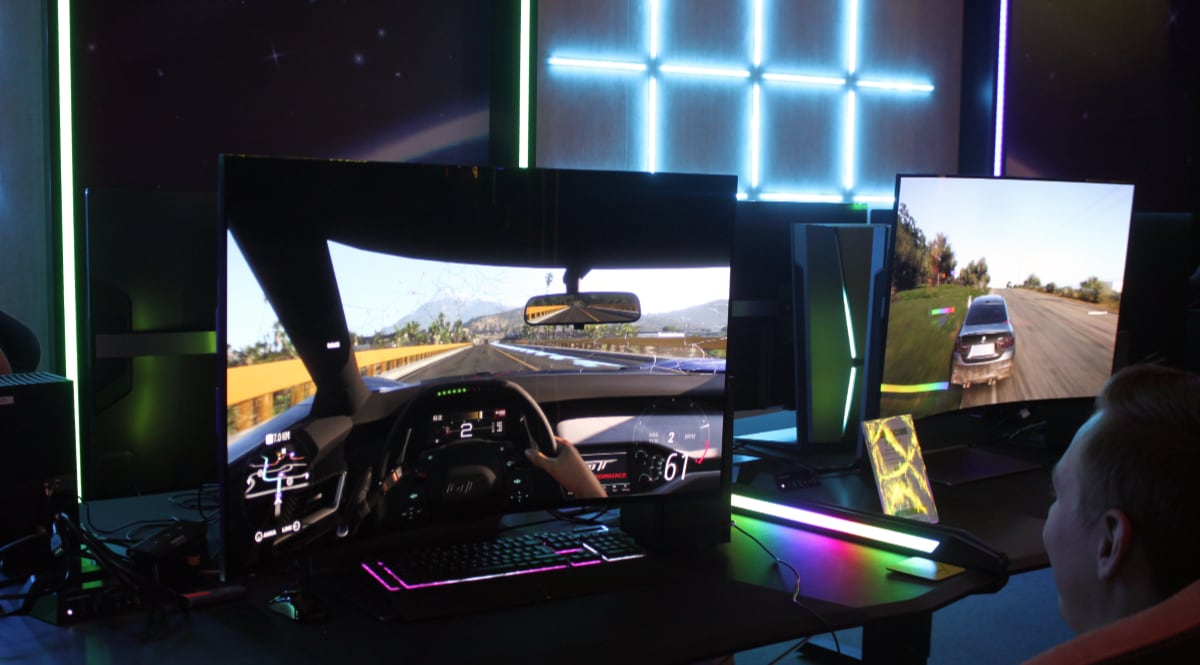
LG's first bendable OLED TV, LG Flex, at the IFA 2022 show. Photo: FlatpanelsHD
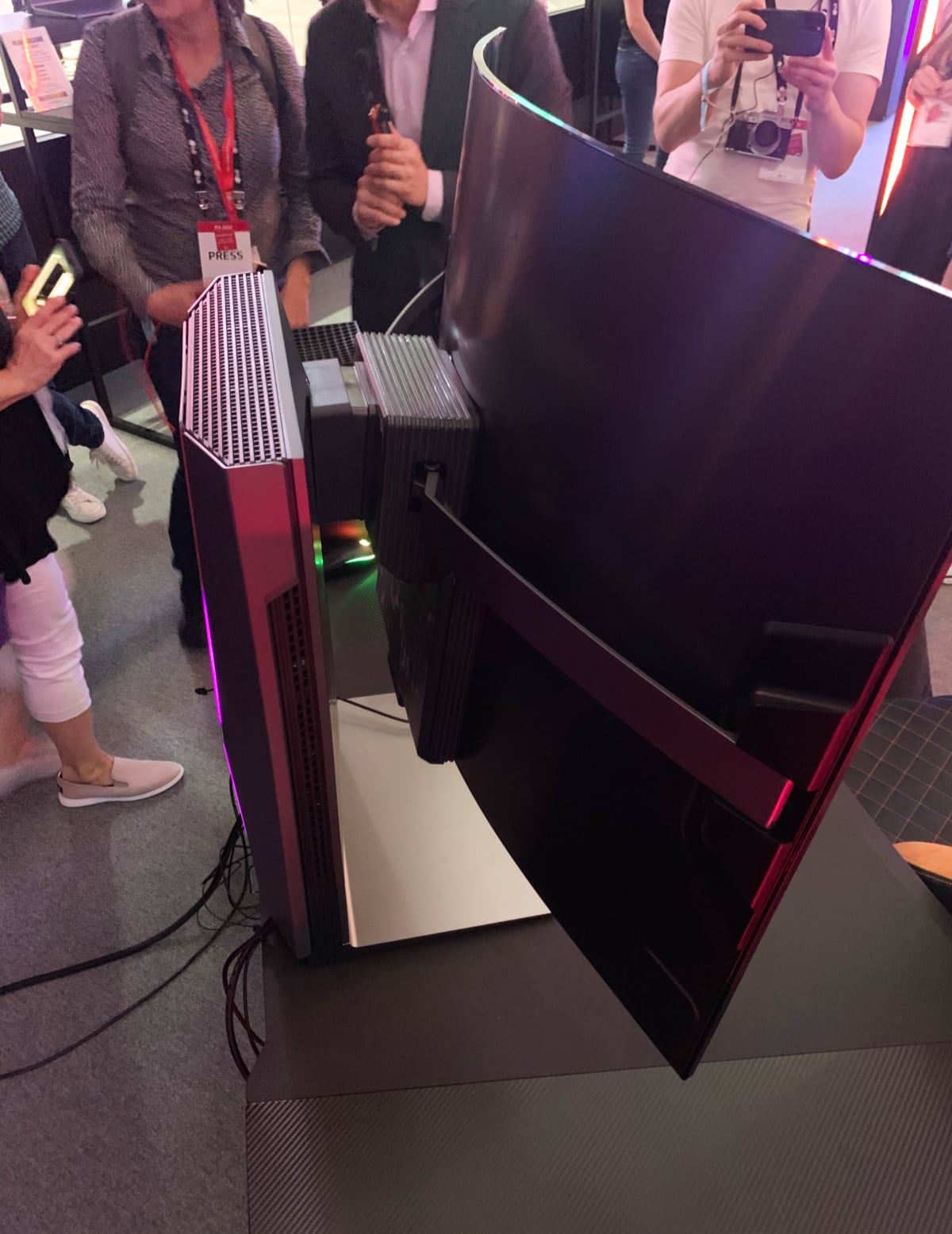
LG's first bendable OLED TV, LG Flex, at the IFA 2022 show.. Photo: FlatpanelsHD